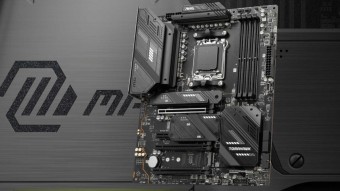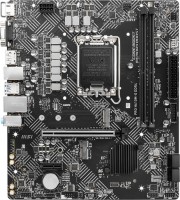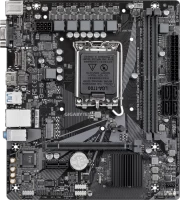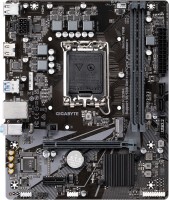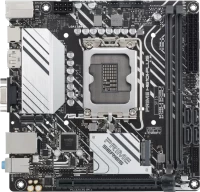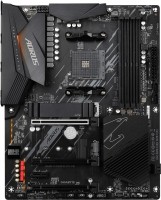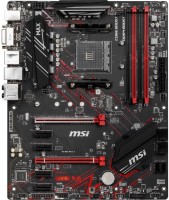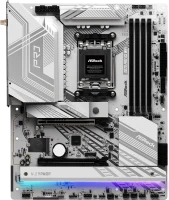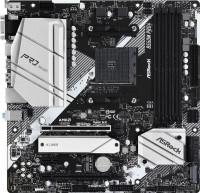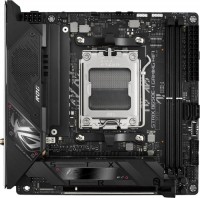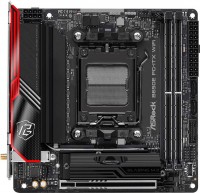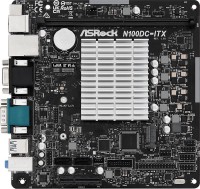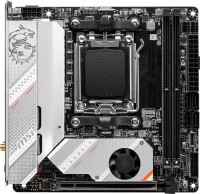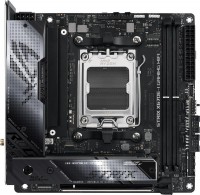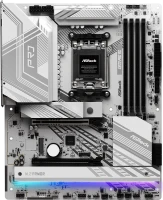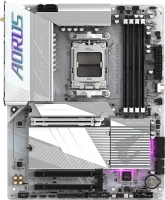How to choose a motherboard?
We independently verify the products and technologies we recommend.

AMD or Intel?

At first glance, a processor socket is a simple connector on the motherboard for installing a CPU. In fact, this is the foundation that determines the compatibility of components and the technical capabilities of a PC. For example, sockets AM4 and AM5 from AMD have completely different technical capabilities, are designed for different generations of AMD processors, support different types of memory, and are in no way compatible with each other. Therefore, choosing the right platform is the basis of everything.
Intel traditionally updates its platform every 2 years, narrowing the choice of processors for a potential buyer and forcing him/her to update the entire “processor + graphics card” combination. However, Intel had to revise its policy under the pressure of the competitor, extending the life cycle of the platform for 3 — 4 years. At the beginning of 2024, the best option is the LGA 1700 socket, which is compatible with the three latest generations of the company’s processors (Alder Lake, Raptor Lake and Raptor Lake Refresh), offering a fairly wide selection of components. Compare this with the much more modest selection of processors for the LGA 1200 platform, which entered the market in 2020. It’s not worth talking about the earlier LGA 1151 v2 sockets.
AMD updates processor platforms less frequently than its competitors: socket AM4 was released in 2017, and AM5 only 6 years later in 2023. Considering that motherboards and RAM for AM5 have gradually become cheaper, we would consider this platform as the basis. It makes sense to build something for AM4 only with very limited finances, and for now, AM5 may be a little more expensive, but in the future this platform will be easier to update.
Chipset and system logic

A chipset is a set of chips on the motherboard that controls data exchange between the processor, RAM, graphics card and other devices. The chipset determines many key system characteristics including the use of a specific type of RAM (DDR3, DDR4, DDR5), support for the NVMe protocol, the current version of the PCI-E, overclocking capabilities and much more.
Intel and AMD have a fairly similar approach to creating and updating chipsets: all models are divided into several price categories (budget, mid-range, top), and the line is updated almost every year. Therefore, it is best to choose a motherboard with a chipset of the latest or penultimate generation. Paying almost $100 for an outdated office board on an outdated H510 chipset in 2024 would be strange.
Now let's talk about price and positioning. Like Intel Core processors with AMD Ryzen, all chipsets are divided into 3 price categories. Intel "H" series and AMD "A" series chipsets belong to the entry level. As a rule, they have very limited possibilities for overclocking components, fewer expansion slots and in most cases do not support current versions of PCI-E interface. Such chipsets are more suitable for very low-cost and not performance-demanding builds (for example, office PCs for working with documents). At the beginning of 2024, Intel's most current models are the H610 and H670 chips. AMD has the A620 for the new AM5 platform and the A520 for the outdated AM4 platform. As a rule, the cost of a motherboard with such an entry-level chipset does not exceed $80.
Motherboards with Intel "B" and AMD "B" series chipsets are the optimal choice for those users who are looking for a balance between price and performance. This option is equally suitable for a mid-range gaming PC or an inexpensive one for editing photos or composing music. In most cases, “B” series chips support all major overclocking technologies, have a solid component base and a modern port layout. Because of this, chips of the AMD B650 and Intel B660 level can be found in advanced motherboards from the Gigabte Aorus Ultra and Asus ROG STRIX series. Such boards usually range in price from $150 to $300.
Intel Z and AMD X chipsets represent top-end system logic designed for the most demanding users and enthusiasts. They provide maximum opportunities for overclocking processors and RAM, support for the latest PCI-Express standards for installing powerful graphics cards and NVMe SSDs, as well as a large number of ports for connecting a variety of devices. The Z and X series chipsets are ideal for building high-performance gaming systems and professional PCs where maximum performance and expandability are required. Most motherboards with flagship chipsets will cost between $300 and $1,000.
Dimensions

The size of the motherboard, known as the form factor, determines its physical dimensions, the location of the mounting holes, and the total number of available expansion slots and connection ports.
ATX is the most common and versatile form factor, offering the optimal balance between size, expansion space, and available features. The ATX form factor frees the hands during build time, so there's no need to worry about cooling system dimensions, graphics card lengths, or RAM stick heights.
Micro-ATX is a smaller version of ATX that provides a good balance between size and functionality. mATX boards are suitable for those who want to build a compact system without significant sacrifices in performance and expandability. They offer fewer graphics card slots and expansions compared to ATX, but can be an ideal choice for mid-range builds, office PCs, and home media centers.
Mini-ITX is the smallest standard form factor designed to create ultra-compact and energy-efficient systems. Mini-ITX boards are ideal for building low-power media centers, minimalistic PCs, or gaming systems where space is a limiting factor.
In general, choosing the right form factor depends on your performance needs, case size and desired cooling system; it’s quite difficult to give specific advice here since everything is very individual. For example, no one forbids you to build a powerful PC with a Ryzen 9 processor and a GeForce RTX 4090 with a water pump inside a compact Thermaltake Core V1 case, but such pleasure will not be cheap.
Drives connection
Graphics cards, HDD and/or SSD, optical drive, adapters and additional modules are connected via the internal interface.
SATA3: classic slow interface for connecting hard drives, 2.5-inch SSDs and optical drives. It is available in every motherboard and is supported by most components, but the maximum read and write speed of a SATA drive cannot exceed 500 – 550 MB/s.
M.2: Specialized port for installing network cards, external antennas and M.2 SSD drives. The maximum speed of the M.2 port and the drive connected to it is determined by the version of the PCI-Express interface, which is responsible for data exchange between the processor, graphics card and the drive. For example, while most budget drives with PCI-E 3.0 support rarely exceed 3000MB/s, flagship models with PCI-E 5.0 can easily exceed 10000MB/s.
PCI-Express: The main data exchange bus used by the processor, graphics card and NVMe storage. This is a rather complicated topic that requires a separate conversation. If not to complicate it, the basic capabilities of the SATA 3 interface will be quite enough for an ordinary PC with a weak graphics card and an ordinary HDD or an inexpensive SSD drive.
If you are building a gaming PC, then it is advisable for the graphics card and SSD to have support for PCI-E 4.0 ― SSDs with support for this interface have linear read-write speeds of up to 7500 MB/s.
At the same time, it is better to have at least 2 M.2 slots in order to be able to install a second drive in the future. The PCI-E 5.0 standard provides the fastest drives and graphics cards, which is critical for working PCs. However, in many cases, 4th generation will suffice.
RAM: number of slots and frequency
At the beginning of 2024, there are 3 main types of desktop RAM on the market: the quite outdated DDR3, the extremely popular DDR4 and the gradually gaining momentum DDR5.
As a rule, motherboards physically support only one type of DDR, the only exception being the recent Intel LGA 1700 platform, which provides support for both DDR4 and DDR5. For a modern gaming or PC for work, it would be wiser to choose promising DDR5 memory. However, assemblies based on DDR4 are not losing ground, providing almost the same performance in games as DDR5, but it costs less.
Most full-size boards are equipped with 4 RAM slots, compact Mini-ITX boards can have either 2 or 4, and server models of the HEDT class often have 8 slots. For builds with a limited budget, two slots will be enough; for powerful gaming and work PCs, it is better to have a reserve of 4 slots. More memory slots give you the flexibility to add capacity as needed, making it easy to upgrade and expand your system in the future. At the same time, it is important to look not only at the number of slots, but also at the maximum amount of memory, since there are entry-level boards on the market with 4 slots and a RAM limit of 64 GB.
RAM clock frequency affects system performance, but the degree of this influence depends on specific tasks and computer configuration. In general, it is better to take a memory faster, but without overdoing it. For office builds on DDR4 memory modules with a frequency of 2400 – 3200 MHz are suitable, for gaming and work PCs on DDR4 it is better to look towards modules with a frequency of 3200, 3600 or 4000 MHz. DDR4 modules with a higher clock frequency are much more expensive and are not much faster. But with DDR5 it is more difficult to advise something, as the standard is constantly developing and modified, and the price difference between modules with a frequency of 5200 and 6800 MHz is gradually coming to zero.
Connection ports
On any modern boards you will most likely find a standard set of connection ports; the details depend on the specific model.
- USB. It's all individual, for some people a few second-generation USBs for keyboard and mouse will be enough, for others, on the contrary, it will be necessary to power a lot of hardware from a more advanced high-speed USB 3.2 gen2 port. And don't forget about USB C.
- Video outputs (HDMI, DisplayPort, VGA, DVI) are required if you plan to use a processor with an integrated graphics card. Discrete graphics cards have their own outputs.
- Thunderbolt is an interface for connecting peripheral devices to a computer, developed by Intel in collaboration with Apple.
- Optical audio output. It is found mainly in expensive overclocking boards with an upgraded audio path.
- LAN. It is for fiber optic internet cable. The motherboard always has a LAN port, with a bandwidth of 1 Gbit/s or 2.5 Gbit/s. Although this is not the limit, in some Hi-End models the throughput can reach 10 Gbit/s.
Power subsystem
This is probably the most important overclocking trap that directly affects the price of the motherboard. Usually, the only parameter that is specified in the board's specifications is the number of phases (or power lines) of the system. The more phases ― the more power the board can provide to the processor. For example, the simplest boards with a 5 or 6 phase converter are sufficient for powering entry level chips. If you install a monster 24-core Core i9 i9-13900K processor into an inexpensive motherboard with Intel H610 chipset, it simply won't be able to overclock from the starting 3 GHz to the peak 5.7 GHz due to lack of power. For overclocking mid-level processors, 12 – 14 phases will be fine.
Cooling system
The cooling system plays a key role in maintaining the optimal temperature of your computer components. Good cooling system prevents overheating, which can lead to malfunctions and shorten the life of the device. Many overclocking boards are equipped with reinforced heatsinks that completely cover the VRM area, near-socket space and all power nodes to reduce possible heating during overclocking.
If you are looking at a board for games or conditional installation, it is better to choose a model with a separate heatsink for the VRM voltage regulator. Heatsinks for M.2 drives would also be useful, since not all modern SSDs are equipped with their own heatsinks. Heat pipes and liquid cooling require a separate discussion about overclocking.
Conclusion
If you feel dizzy after reading this, that's okay. Choosing a motherboard is not the easiest task, you need to keep in mind the processor socket and chipset, understand the PCI-Express bus version and at the same time do not forget about the right size and the right number of connection slots. But there is good news ― the motherboard market is well standardized and divided into classes, so the selection process can be simplified: outline your budget and goals, choose the right platform, decide on the right number of ports for RAM and M.2 SSD. Then you can look at the number of USB ports, the presence of a wireless receiver, etc. And to simplify the choice even further, we have a filter by purpose, with which you can sort office, gaming, server and other categories of boards.
Was this article useful? Yes0 No0 |
Articles, reviews, useful tips
All materials




